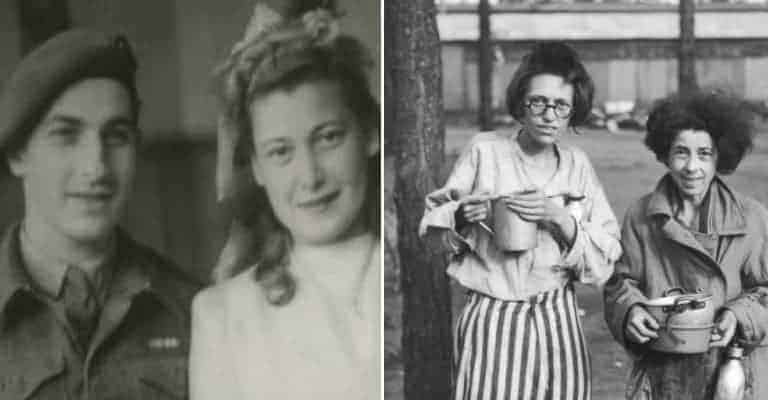Belsen Concentration Camp was an unlikely setting for a love story. However, its liberation marked the beginning of a romance between Gena Goldfinger, a former camp inmate and Norman Turgal, a British soldier. Despite the grim setting and circumstances, the couple met and fell in love – six months later, they were married. Because of the place where they met and fell in love, The British Press dubbed the new Mrs. Turgel, “The Bride of Belsen” a title that stuck with her for the rest of her life.
However, there is so much more to the story of Gena Turgel than the touching circumstances of her marriage. For before she reached this happily ever after, Gena had to survive the loss of her home, much of her family, the ghetto, and four concentration camps. She survived a death march- and the gas chamber and nursed Anne Frank before her death. Once in England, Gena enjoyed a long and happy marriage with Norman. However, the horrors she had experienced and witnessed never left her. So, until her death at the age of 95 in June 2018, Gena Turgel dedicated herself to ensuring that her story and the story of the Holocaust would never be forgotten.

From Krakow to Auschwitz
Gena Goldfinger had a happy childhood. She was born in Krakow, Poland in 1923, the youngest of nine children. Her family was middle class and prosperous and her world safe and secure. Then, when Gena was 16, her world began to fall apart as the Second World War began. On the very first day of the war, September 1, 1939, the Luftwaffe bombed Krakow. Before long, German forces had invaded Poland. The good times were over.
“Our freedom ended abruptly, and we found ourselves utterly cut off from the rest of the world,” Gena later recalled. The Nazis closed Jewish schools and confiscated businesses. Gena watched people being dragged away or executed in the streets. Then, in the autumn of 1941, the Nazi’s forced the Goldfingers to leave their home. Gena, her mother and four of her siblings, were forced to abandon most of their possessions and, with just a sack of potatoes and some flour move into Krakow’s ghetto.
“All the other Jews of Cracow were there, too, but no feelings of strength or unity emerged from this sharing of experience, “said Gena. “Life in the ghetto was unreal. People’s main preoccupation concerned the next transport… would it be their turn next?” It was in the ghetto that the loss of Gena’s own family began. Her sister in law and three-year-old nephew were taken from the family and sent to Auschwitz where they died. Meanwhile, Gena witnessed the execution of two of her brothers in the ghetto. A German in the street shot one, Willek when he stood on a chair next to a window to reach for a suitcase off a wardrobe. The Nazis also shot Gena’s eldest brother while he was trying to escape through the sewers to join the Resistance.

In 1942, the liquidation of the Krakow ghetto began, and on March 1, 1942, the Nazis moved Gena and her surviving family into the Plaszov concentration camp. By day they worked, and at night, they slept in a barrack with 100 other people. When Gena’s sister Miriam and her husband tried to smuggle food into the camp, the Nazi’s shot them. Gena, her mother and surviving sister, Hela were forced to burn the bodies. “We had to carry wood for the bodies to be burned,” she later recalled, “Imagine how my mother felt carrying wood for her daughter to be burned.” Slowly Gena became hardened to her suffering. “The agony grew deep inside me, and I became like a stone, ” she said.
Then, in the winter of 1944, Gena, her mother, and Hela became part of the last transport from Plaszov to Auschwitz-Birkenau. They were forced to make the 41-mile journey on foot in temperatures 20 degrees below freezing. “We walked all day long for about three weeks, sleeping in farms or snowy fields, “explained Gena. By this time, Hela was extremely frail. The prisoners only survived because the residents of villages they passed through gave them gifts of clothing and food.

